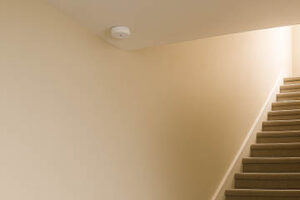
Sustainability in Strata Schemes
September 12, 2025
Trust Account Management
October 10, 2025
Sustainability in Strata Schemes
September 12, 2025
Trust Account Management
October 10, 2025
Fire Safety

Fire Safety in New South Wales
In New South Wales (NSW), fire safety requirements vary by building type, but generally include mandatory smoke alarms in all residential buildings, clear fire exits, and fire-rated doors in multi-unit buildings. Commercial, industrial, and retail buildings require a broader range of statutory fire safety measures, such as fire detection and alarm systems, fire suppression systems, and emergency lighting, as mandated by the Building Code of Australia.
Owners must ensure these measures are installed and maintained, with maintenance to be performed by accredited practitioners and certified through Fire Safety Certificates. An accredited assessor is someone authorised for this specific function and approved under the Building and Development Certifiers Act 2018.
To ensure independence, the accredited person must not have installed a fire safety measure that they assess.
Fire Safety in Strata
In NSW strata buildings, fire safety requires installing and maintaining smoke alarms (connected and compliant), fire extinguishers, and fire blankets. Owners Corporations are legally responsible for ensuring these and other essential fire safety measures, like fire doors, are in place and certified annually via an Annual Fire Safety Certificate, which requires assessment by an accredited practitioner. Residents must also follow rules such as keeping fire exits clear and not overloading electrical outlets to contribute to the overall fire safety strategy of a building.
Fire Safety Schedule Versus Fire Safety Certificate
A Fire Safety Schedule (FFS) plays a key role in ensuring that a building’s fire safety measures are installed and maintained to meet a minimum performance standard. It is a list of the essential fire safety measures that a building must have and the standards they must meet, while a Fire Safety Certificate is a document issued on behalf of the building owner to confirm that these specific measures, as detailed in the FSS, have been properly installed and are capable of performing to the standard required. The certificate confirms that each of the fire safety measures that apply to a building have been checked. In short, the FSS serves as the blueprint for compliance, and the certificate provides the certification of that compliance.
Fire Safety Reforms
Fire safety reforms were introduced to make buildings safer and to improve compliance with requirements for the design, certification and maintenance of fire safety measures in buildings through:
- increasing the involvement of Fire and Rescue NSW (FRNSW) in reviewing non-standard fire safety design proposals
- creating an independent assessor role to evaluate fire safety measures and equipment in buildings
- improving documentation of fire safety measures by standardising documentation and simplifying amendment processes and,
- mandating procedures for the maintenance of fire safety measures
The Environmental Planning and Assessment (Development Certification and Fire Safety) Amendment (Fire Safety) Regulation 2022 was introduced and implemented in early 2025 with the intention of creating and enforcing a mandated process for the routine maintenance of specific essential fire safety measures. These requirements apply to buildings where annual or supplementary fire safety statements are required.
The Amending Regulation also requires owners to ensure that inspection, testing and where applicable, other servicing of essential fire safety measures in new and existing Class 1b to 9 buildings are done in accordance with Australian Standard 1851-2012, routine service of fire protection systems and equipment (AS 1851), where applicable.
The standard covers testing processes, frequency and documentation for specific fire safety measures.
These new requirements supplement the need for building owners to demonstrate (through the fire safety certificate issued at least annually), that each essential fire safety measure in the building has been verified as being found to be capable of performing to the required standard.
The aim of the new fire safety reforms is to reduce life safety risks, damage to property, the incidence and cost of fire safety defects, and most importantly to ensure a safe community for all residents.

